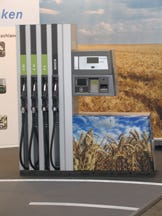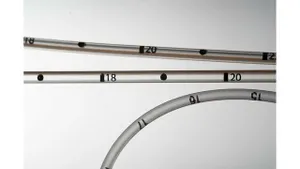Plastics holding their own in slumping auto industry
Held in Frankfurt, Germany in mid-September, the IAA remains the world’s largest car show, but this year’s version showed the signs of the prevailing market conditions. Some major OEMs skipped the event, and Tier-One and -Two suppliers were very, very hard to find.
October 8, 2009
Held in Frankfurt, Germany in mid-September, the IAA remains the world’s largest car show, but this year’s version showed the signs of the prevailing market conditions. Some major OEMs skipped the event, and Tier-One and -Two suppliers were very, very hard to find.
Almost 30% fewer exhibitors booked space, with some leading brands—Honda, Mitsubishi, and Nissanpassing on the event altogether. Compared to the previous show in 2007, this year’s also was tellingly absent of many top Tier-One and -Two suppliers. The ones who did exhibit were not shy to say that their presence proved their support of the industry, naturally, and despite the sales slowdown it remains a mammoth market. Many at the event commented that in fact sales in Asia and India hit a minor bump in late 2008 but just kept going. In Europe and North America, car demand may turn worse in 2010 as the artificial impetus of various "cash-for-clunkers" programs runs its course.
|
In 2007 the mega-trend at the IAA was reduced carbon dioxide emissions, at the time very much under the microscope as then-pending European Union regulations (since watered down) were expected to force drastically improved gas mileage requirements on carmakers. With green carpeting, wallpaper, and mood lighting the prevailing shade at the 2009 IAA, there was no overlooking the "environmentally responsible" marketing movement at many exhibitors’ booths, punctuated by the display of more alternative-energy vehicles than likely are actually on the road in Frankfurt.
For plastics processors, alternative energy for car propulsion could eventually prove a bonanza, opined experts at two plastics suppliers, Rhodia and Lanxess, competitors in the polyamide supply market. At Rhodia (Lyon, France), Jean-Claud Steinmetz, VP automotive/transportation for nylon (PA6 and PA 6/6), predicted that hybrid gas/electric engines would be good for his company and its processing customers, as the smaller gas engines in these often run at higher temperatures and with a turbocharger, prompting the need for high-heat-stable plastics.
Jürgen Selig, application development manager, transportation, for semi-crystalline materials, at Lanxess’s R&D facility in Dormagen, Germany, sees opportunity on the battery-powered side of the engine as well. The company is working on a molded hybrid plastic/metal development for a roughly 70-kg battery, he said, with the plastics key to parts integration. He also expects the surge of interest in electric cars to develop into proving grounds for flame-retardant thermoplastics. “Not much can go wrong with a 12V battery, but with the powerful ones being developed, flame retardancy will be critical,” he noted.
Lanxess continues to see application potential for hybrid plastic/metal structures, a field it helped develop. In 2008, said Selig, 78 different cars were fitted with hybrid front ends molded with the supplier’s Durethan polyamide. Newly designed ones using PA with 60% glass-fiber reinforcement, double that on most now commercial, will reduce the front-end’s weight by almost 40%, he said. He says such hybrid moldings also are finding their way into other parts of the car, notably door panels and dashboards. “In about 2011 there will be commercial applications of both of these,” he said.
In a car’s fuel tank and fuel transport system, Steinmetz sees a potential growth area for polyamide, especially for small city cars, hybrid vehicles, or for those running ethanol or other bio-fuels. Polyamide from Rhodia is already being blowmolded for single-layer motorcycle fuel tanks, and he said ongoing tests “look promising” for PA’s use in monolayer tanks for cars running bio-fuel. Smaller cars could be made much lighter if fuel tanks carried only 40L (about 10.6 gallons) of gas, he said, and at that size a monolayer blowmolding may make more economic sense and be just as efficient in combating emissions as the multilayer PE/EVOH tanks currently used. —Matt Defosse
About the Author(s)
You May Also Like



